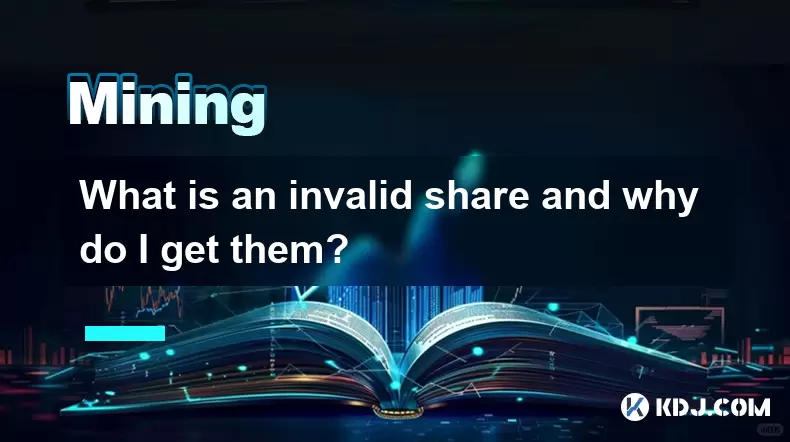-
 Bitcoin
Bitcoin $120400
1.77% -
 Ethereum
Ethereum $3615
7.90% -
 XRP
XRP $3.580
17.84% -
 Tether USDt
Tether USDt $1.001
0.06% -
 BNB
BNB $729.4
1.25% -
 Solana
Solana $179.9
5.04% -
 USDC
USDC $0.0000
0.01% -
 Dogecoin
Dogecoin $0.2311
8.22% -
 TRON
TRON $0.3226
4.04% -
 Cardano
Cardano $0.8490
12.85% -
 Hyperliquid
Hyperliquid $46.45
0.72% -
 Stellar
Stellar $0.4913
8.54% -
 Sui
Sui $4.027
2.00% -
 Chainlink
Chainlink $18.51
11.67% -
 Hedera
Hedera $0.2818
21.51% -
 Avalanche
Avalanche $24.03
7.40% -
 Bitcoin Cash
Bitcoin Cash $508.5
2.90% -
 Shiba Inu
Shiba Inu $0.00001496
3.24% -
 UNUS SED LEO
UNUS SED LEO $8.961
1.83% -
 Toncoin
Toncoin $3.264
3.13% -
 Litecoin
Litecoin $104.6
8.15% -
 Polkadot
Polkadot $4.389
6.11% -
 Uniswap
Uniswap $9.924
10.63% -
 Monero
Monero $337.9
0.49% -
 Pepe
Pepe $0.00001376
2.79% -
 Bitget Token
Bitget Token $4.830
2.46% -
 Ethena USDe
Ethena USDe $1.001
0.05% -
 Dai
Dai $1.000
0.02% -
 Aave
Aave $325.2
1.66% -
 Bittensor
Bittensor $423.7
-0.85%
What is an invalid share and why do I get them?
Invalid shares in cryptocurrency mining occur when submissions fail to meet pool or network requirements, often due to latency, stale work, or hardware misconfigurations.
Jul 17, 2025 at 10:14 am

Understanding Invalid Shares in Cryptocurrency Mining
In the world of cryptocurrency mining, especially in Proof-of-Work (PoW) systems, miners are constantly submitting their work to a mining pool or directly to the blockchain network. These submissions, known as shares, are crucial for earning rewards. However, sometimes these shares are marked as invalid. An invalid share is a submission that does not meet the required criteria set by the mining pool or network. This can happen for various technical and operational reasons.
Technical Reasons Behind Invalid Shares
One of the most common causes of invalid shares is network latency. When a miner submits a share after the block has already been solved by another miner, the share becomes outdated and thus invalid. This often occurs when the connection between the miner and the pool server is unstable or slow.
Another factor is stale work. Mining pools provide miners with specific tasks—known as work units—to solve. If a miner continues working on an old task after a new one has been issued, any resulting shares will be invalid because they no longer correspond to the current block being mined.
Also, incorrect nonce values can lead to invalid shares. A nonce is a number used once in the hashing process. If the miner's software generates a hash that doesn't meet the difficulty target set by the pool, it is rejected.
- Network latency delays share submission beyond the valid time window.
- Stale work arises when miners continue processing outdated tasks.
- Nonce errors occur when the generated hash fails to meet the required difficulty.
Hardware and Software Misconfigurations
Improperly configured mining hardware or software can also result in invalid shares. For example, if a GPU or ASIC miner is overclocked too aggressively, it may produce computational errors during hashing, leading to incorrect results that are rejected by the pool.
Additionally, using outdated mining software can cause compatibility issues with the pool’s protocol. Developers frequently release updates to fix bugs, improve efficiency, and support new algorithms. Running an older version might mean your submissions don’t align with the pool’s current validation rules.
- Overclocking can cause calculation errors during hashing.
- Outdated software may fail to communicate properly with the mining pool.
Mining Pool Policies and Difficulty Settings
Each mining pool sets its own difficulty level for shares. Some pools allow lower difficulty shares to increase reporting frequency, while others require higher difficulty shares to reduce network traffic. If your miner is set to submit shares at a difficulty lower than what the pool expects, those shares will be considered invalid.
Furthermore, some pools implement strict validation policies to prevent spamming or low-effort submissions. Miners who configure their systems without understanding these policies may inadvertently send data that gets flagged and discarded.
- Difficulty mismatch occurs when submitted shares fall below the pool's minimum requirement.
- Strict pool rules may reject non-compliant submissions automatically.
How to Diagnose and Fix Invalid Shares
To address invalid shares, start by checking your network connection. Ensure you're using a stable internet connection and connect to the nearest mining pool server to minimize latency. Most pools offer multiple server locations for this reason.
Next, review your miner configuration. Make sure your mining software is up-to-date and that your hardware settings—especially clock speeds and voltages—are within stable ranges. Avoid aggressive overclocking unless thoroughly tested.
You should also adjust the share difficulty setting in your mining software to match the pool's requirements. Many pools display recommended settings on their websites or dashboards.
Finally, monitor your logs regularly. Most mining software provides detailed logs showing accepted, rejected, and invalid shares. Look for patterns such as recurring timeout messages or repeated rejection codes, which can help pinpoint the issue.
- Check network stability and connect to the closest pool server.
- Update mining software and ensure hardware settings are stable.
- Match share difficulty to the pool's specified levels.
- Review logs for error patterns and adjust accordingly.
Frequently Asked Questions
Q: Can invalid shares affect my mining profitability?
Yes, invalid shares do not contribute to your overall hashrate or reward calculations. Consistently high invalid rates can significantly reduce earnings over time.
Q: Is there a way to track invalid shares in real-time?
Most mining software and pool dashboards display live statistics including accepted, rejected, and invalid shares. Tools like NiceHash, HiveOS, or Minerstat offer detailed monitoring interfaces.
Q: Do all mining pools handle invalid shares the same way?
No, different pools have varying tolerance levels and logging mechanisms. Some pools may discard invalid shares silently, while others log them explicitly for transparency.
Q: Can firewall or antivirus software cause invalid shares?
Yes, overly aggressive firewalls or antivirus programs can interfere with mining software communication, causing timeouts and invalid submissions. It’s advisable to whitelist mining applications in security software.
Disclaimer:info@kdj.com
The information provided is not trading advice. kdj.com does not assume any responsibility for any investments made based on the information provided in this article. Cryptocurrencies are highly volatile and it is highly recommended that you invest with caution after thorough research!
If you believe that the content used on this website infringes your copyright, please contact us immediately (info@kdj.com) and we will delete it promptly.
- Bitcoin, Cloud Mining, Crypto Wealth: Riding the Bull Run in Style
- 2025-07-18 12:30:12
- Ethereum Gas Fees, ERA Airdrop: A New Yorker's Take on Crypto Chaos
- 2025-07-18 12:50:12
- Bitcoin, Altcoins, and the Crypto Market: Navigating Trump's Crypto Ventures and the Evolving Digital Landscape
- 2025-07-18 12:50:12
- Bitcoin Holdings and the Smarter Web: A Match Made in Digital Heaven?
- 2025-07-18 12:10:12
- Bitcoin, MSTR & Saylor's Strategy: A Winning Trifecta?
- 2025-07-18 08:30:13
- Bitcoin Mortgages Down Under: A New Wave in Australian Homeownership?
- 2025-07-18 08:50:12
Related knowledge

How are crypto mining profits taxed?
Jul 14,2025 at 12:28am
Understanding Cryptocurrency Mining and TaxationCryptocurrency mining involves validating transactions on a blockchain network and earning rewards in ...

How to keep a mining rig cool
Jul 12,2025 at 01:42pm
Understanding the Importance of Cooling in Mining RigsCryptocurrency mining is an intensive process that places heavy demand on hardware components, p...

How to mine crypto on a gaming PC
Jul 16,2025 at 12:00pm
What is Crypto Mining on a Gaming PC?Crypto mining involves using your computer's processing power to validate transactions on a blockchain network. A...

How to set up a crypto miner
Jul 16,2025 at 09:14am
Understanding Ethereum Gas Fees: What Are They and How Do They Work?Ethereum gas fees are a fundamental aspect of the network, representing the cost r...

Can you mine crypto on a laptop?
Jul 16,2025 at 02:21am
Is It Feasible to Mine Cryptocurrency on a Laptop?Mining cryptocurrency on a laptop is technically possible, but feasibility depends heavily on the ha...

Is crypto mining worth it?
Jul 16,2025 at 01:21am
Understanding the Basics of Crypto MiningCrypto mining refers to the process of validating transactions on a blockchain network by solving complex mat...

How are crypto mining profits taxed?
Jul 14,2025 at 12:28am
Understanding Cryptocurrency Mining and TaxationCryptocurrency mining involves validating transactions on a blockchain network and earning rewards in ...

How to keep a mining rig cool
Jul 12,2025 at 01:42pm
Understanding the Importance of Cooling in Mining RigsCryptocurrency mining is an intensive process that places heavy demand on hardware components, p...

How to mine crypto on a gaming PC
Jul 16,2025 at 12:00pm
What is Crypto Mining on a Gaming PC?Crypto mining involves using your computer's processing power to validate transactions on a blockchain network. A...

How to set up a crypto miner
Jul 16,2025 at 09:14am
Understanding Ethereum Gas Fees: What Are They and How Do They Work?Ethereum gas fees are a fundamental aspect of the network, representing the cost r...

Can you mine crypto on a laptop?
Jul 16,2025 at 02:21am
Is It Feasible to Mine Cryptocurrency on a Laptop?Mining cryptocurrency on a laptop is technically possible, but feasibility depends heavily on the ha...

Is crypto mining worth it?
Jul 16,2025 at 01:21am
Understanding the Basics of Crypto MiningCrypto mining refers to the process of validating transactions on a blockchain network by solving complex mat...
See all articles

























































































